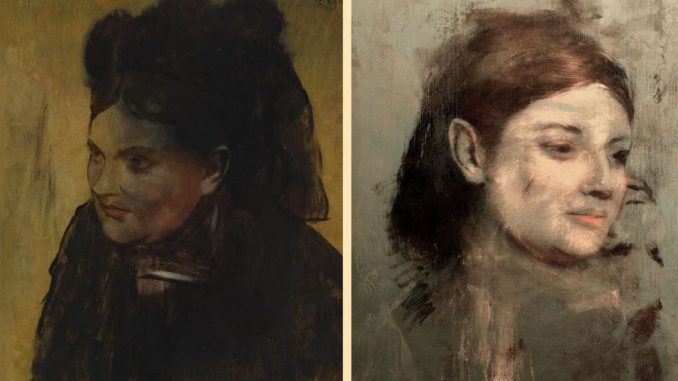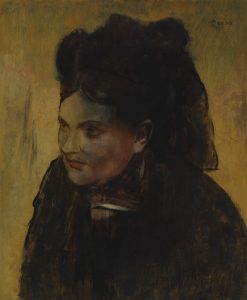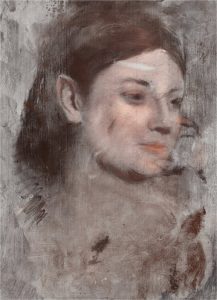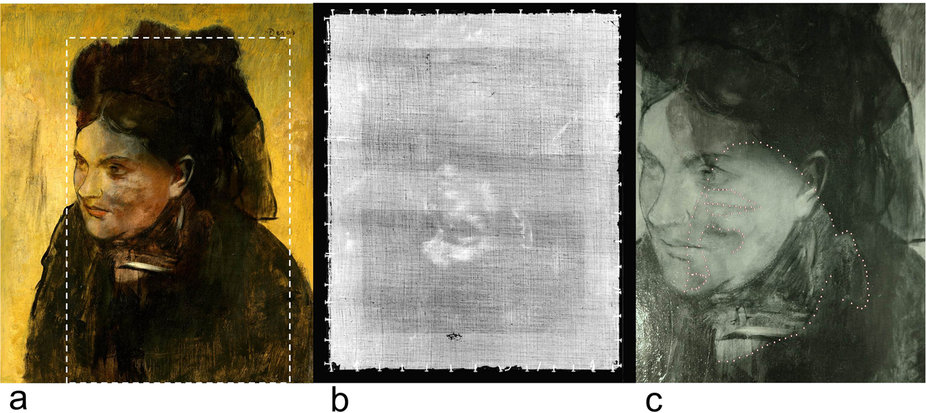
A 19th century work of art by Edgar Degas contains a secret portrait hidden on the canvas.
A team of Australian scientists using X-ray fluorescence scanned the ‘Portrait of a Woman’ by 19th century French impressionist Edgar Degas and found that it contained an abondoned portrait of another woman beneath the visible image.
 The New Daily reports:
The New Daily reports:

BYPASS THE CENSORS
Sign up to get unfiltered news delivered straight to your inbox.
You can unsubscribe any time. By subscribing you agree to our Terms of Use
Latest Video
Portrait of a Woman, painted between 1876 and 1880, has long been known to have a concealed painting underneath its surface, but the details have always been a mystery — until now.
By applying a non-invasive, rapid, high-definition X-ray fluorescence (XRF) mapping technique, scientist Daryl Howard, from the Australian Synchrotron, and fellow researchers were able to reveal the hidden woman in clear detail.
The researchers have even made an educated suggestion about who the woman is — French model Emma Dobigny who Degas reportedly had a special fondness for.
“When we finally got the image … to us, the model we found looked very similar [to Emma Dobigny],” Dr Howard said.
“There are several paintings of her by Degas in various museums and galleries around the world and just by visual comparison it looked very much like her.
“But it will very interesting to see how many other people agree with us, or to hear other people’s thoughts about who they think it could be.”
Earlier imaging techniques, such as conventional X-rays, have been unable to pick up enough visual information to see what was hidden under the surface.
“Based on what had been observed with early X-ray techniques, we weren’t expecting to see so much detail,” Dr Howard said.
“I was amazed at how well it turned out.”
The process, using synchrotron radiation, produced elemental maps of the painting, which were processed to produce a false colour representation of the hidden portrait.
The technique involves a very intense X-ray beam which is focused on a small spot size, which allows very high resolution scans.
“What we do is place the painting on a motorised apparatus which can scan the painting back and fourth through the beam,” Dr Howard said.
“Then we have a X-ray fluorescence detector that operates very quickly so we can scan the painting through that beam quite rapidly, and collect the elemental information of the painting as we are scanning it.”
It has been discovered that by using the XRF technique, metallic elements from pigments in an underpainting can be detected, enabling the reconstruction of hidden layers.
“Each metal has its own unique X-ray energy that it gives off as it gets excited so we collect that with the detector.”
The false colour effect was achieved by using custom-made software which then produces a plausible representation of the artist’s work.
If the reconstruction had been attempted 10 years previously, it would have taken over a year but due to current technology, the researchers were able to scan the painting in just a day and a half.
The technology is used for a wide range of purposes including disease studies, food nutrition research and geological exploration.
“The scanning of paintings is a very fun thing we do but not something we do everyday,” Dr Howard said.
Receiving the Degas original was “very exciting”, Mr Howard said, but the special privilege of actually handling the painting was left to conservators from the National Gallery of Victoria who mounted the painting in the machine.


